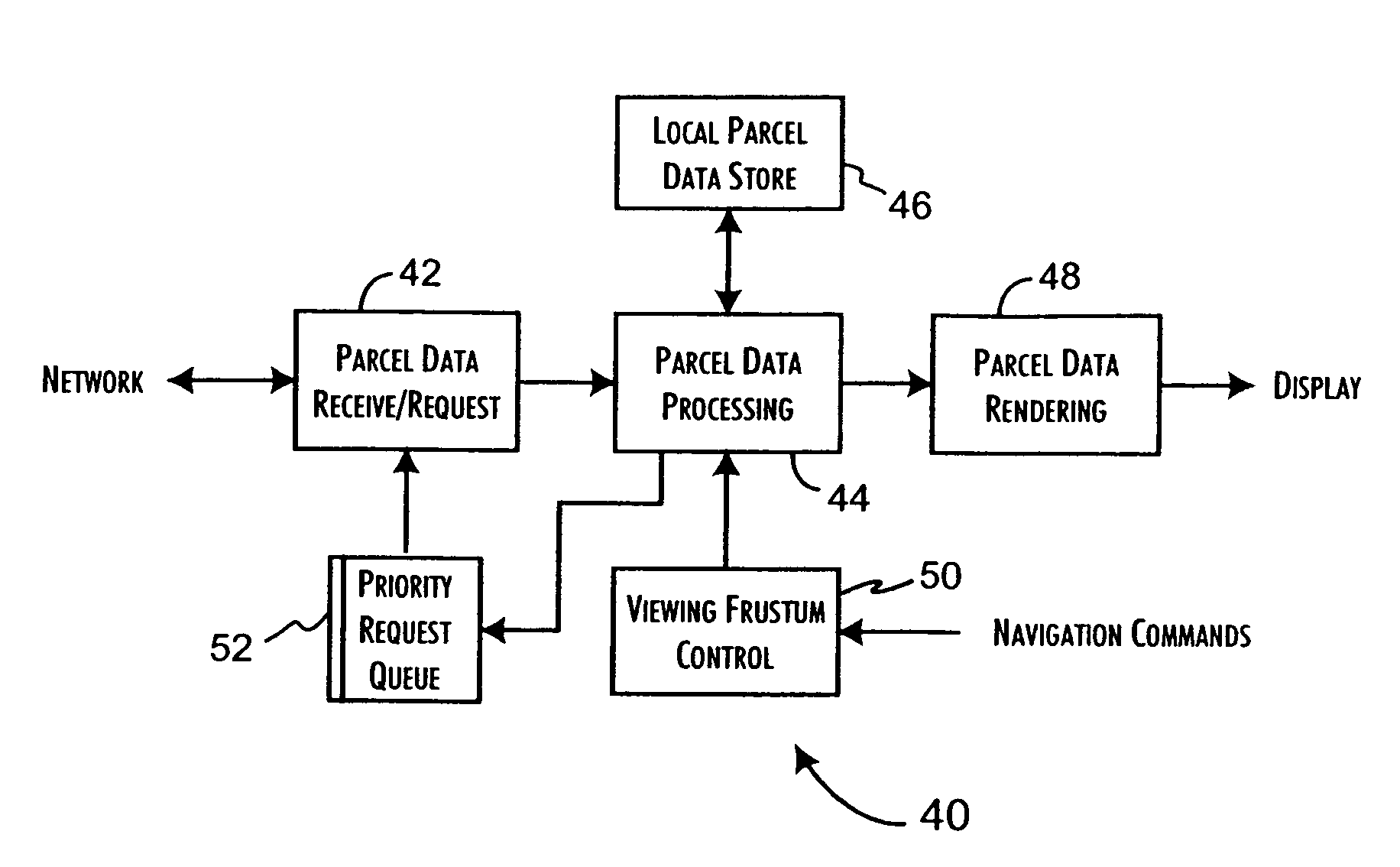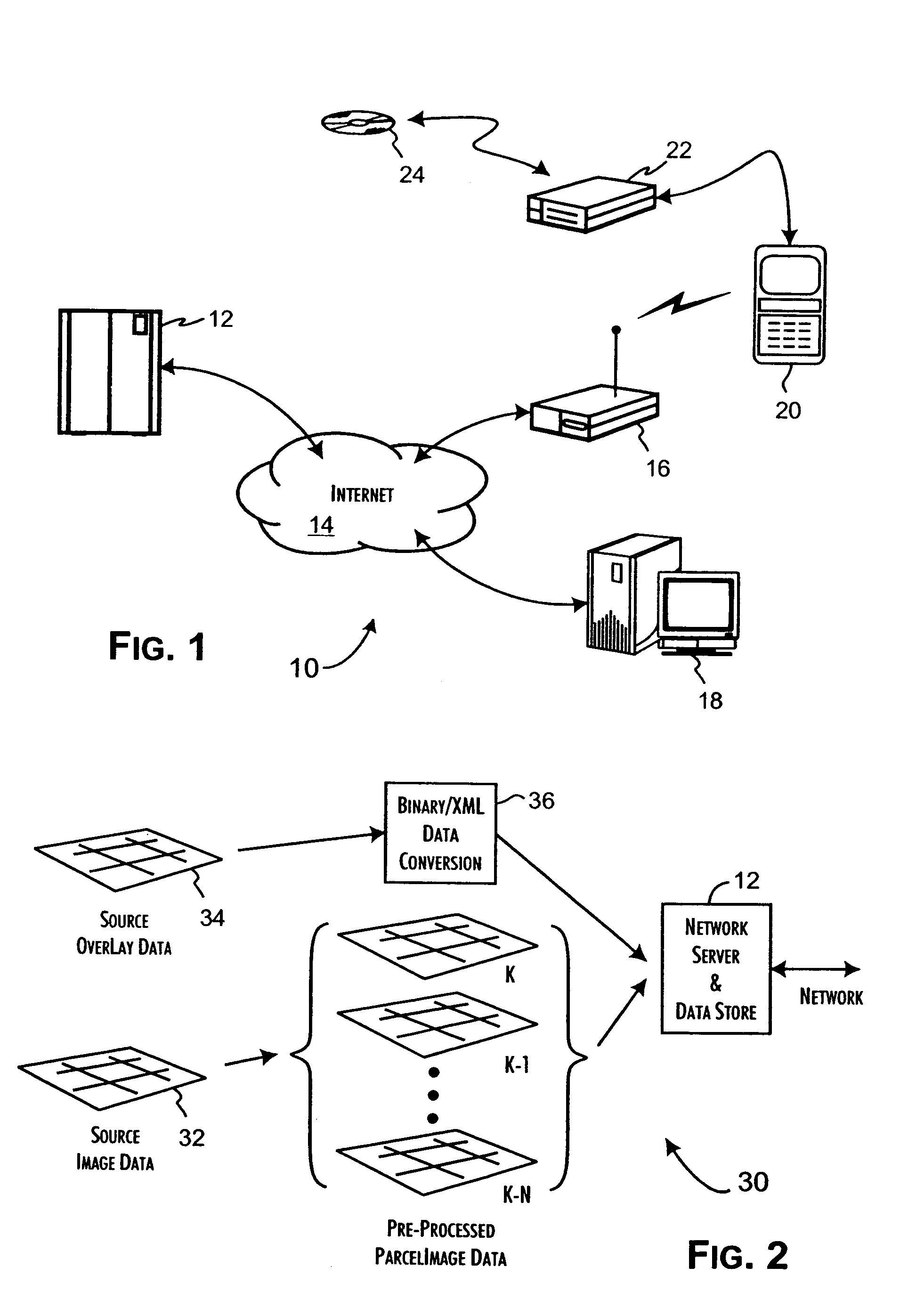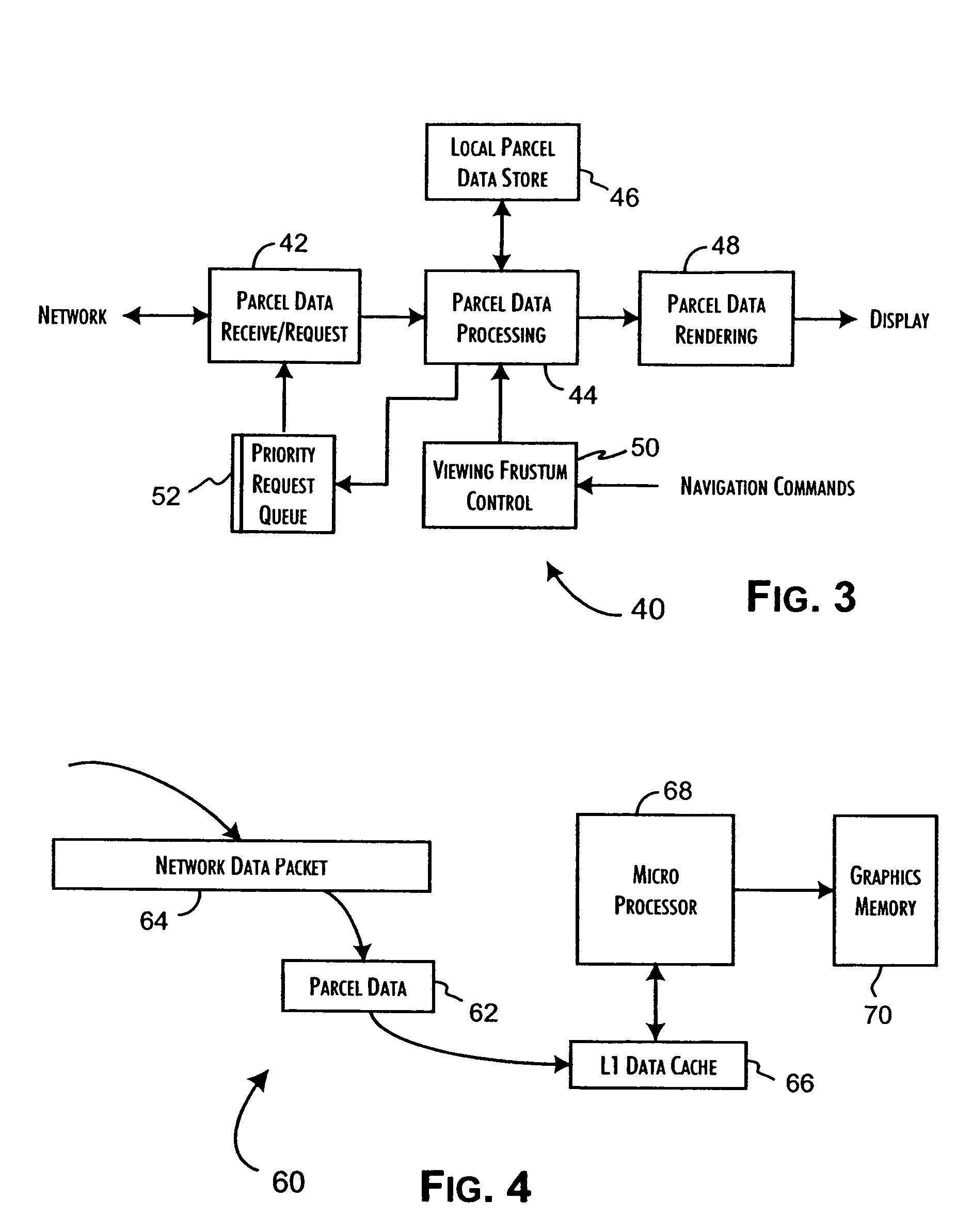System and methods for network image delivery with dynamic viewing frustum optimized for limited bandwidth communication channels
a network image and dynamic viewing technology, applied in the field of network image distribution systems, can solve the problems of inherently increasing latency in resolving finer levels of detail, insufficient bandwidth for network image delivery, etc., to achieve the effect of reducing the computational complexity of determining request prioritization, reducing the computational complexity of determining request priority, and reducing the computational complexity of determining client processing power
- Summary
- Abstract
- Description
- Claims
- Application Information
AI Technical Summary
Benefits of technology
Problems solved by technology
Method used
Image
Examples
Embodiment Construction
[0035]The preferred operational environment 10 of the present invention is generally shown in FIG. 1. A network server system 12, operating as a data store and server of image data, is responsive to requests received through a communications network, such as the Internet 14 generally and various tiers of internet service providers (ISPs)z including a wireless connectivity provider 16. Client systems, including conventional workstations and personal computers 18 and smaller, typically dedicated function devices often linked through wireless network connections, such as PDAs, webphones 20, and automobile navigation systems, source image requests to the network server 12, provide a client display and enable image navigational input by a user of the client system. Alternately, a dedicated function client system 20 may be connected through a separate or plug-in local network server 22, preferably implementing a small, embedded Web server, to a fixed or removable storage local image repos...
PUM
 Login to View More
Login to View More Abstract
Description
Claims
Application Information
 Login to View More
Login to View More - R&D
- Intellectual Property
- Life Sciences
- Materials
- Tech Scout
- Unparalleled Data Quality
- Higher Quality Content
- 60% Fewer Hallucinations
Browse by: Latest US Patents, China's latest patents, Technical Efficacy Thesaurus, Application Domain, Technology Topic, Popular Technical Reports.
© 2025 PatSnap. All rights reserved.Legal|Privacy policy|Modern Slavery Act Transparency Statement|Sitemap|About US| Contact US: help@patsnap.com



